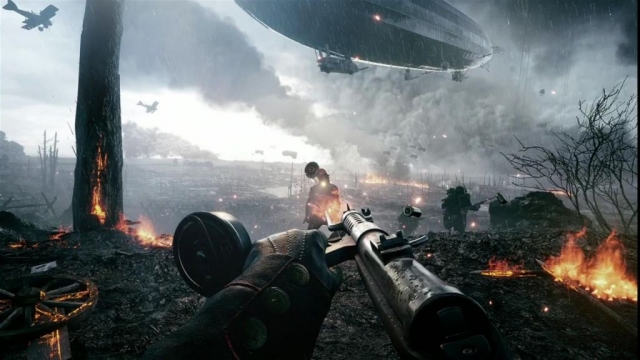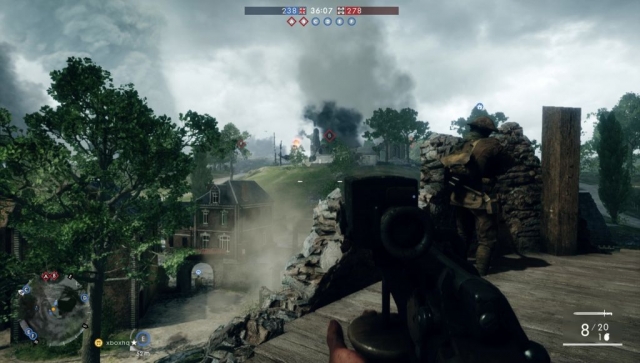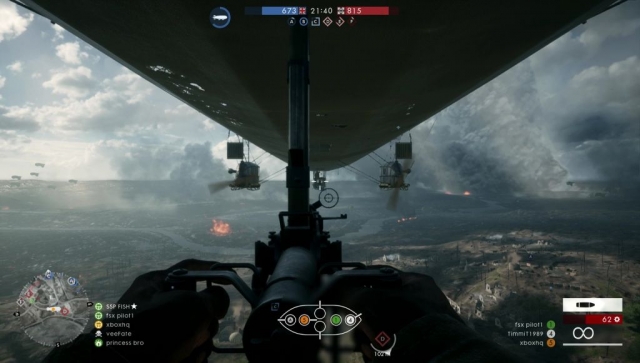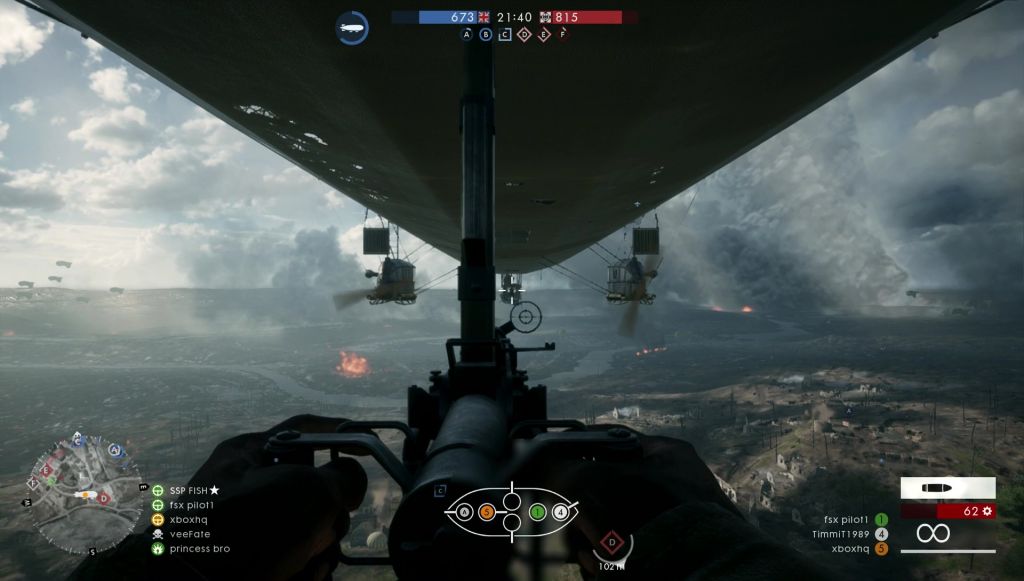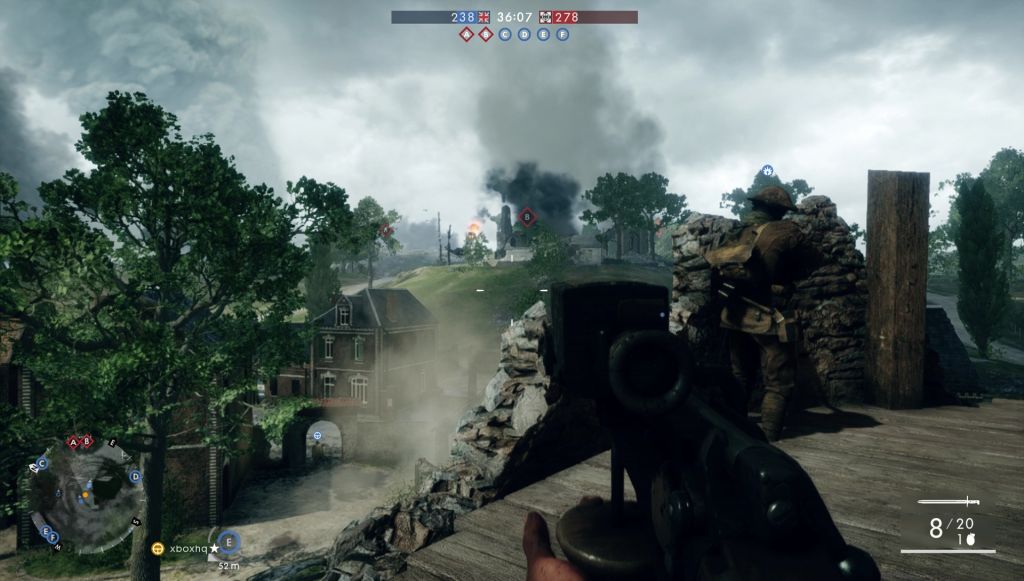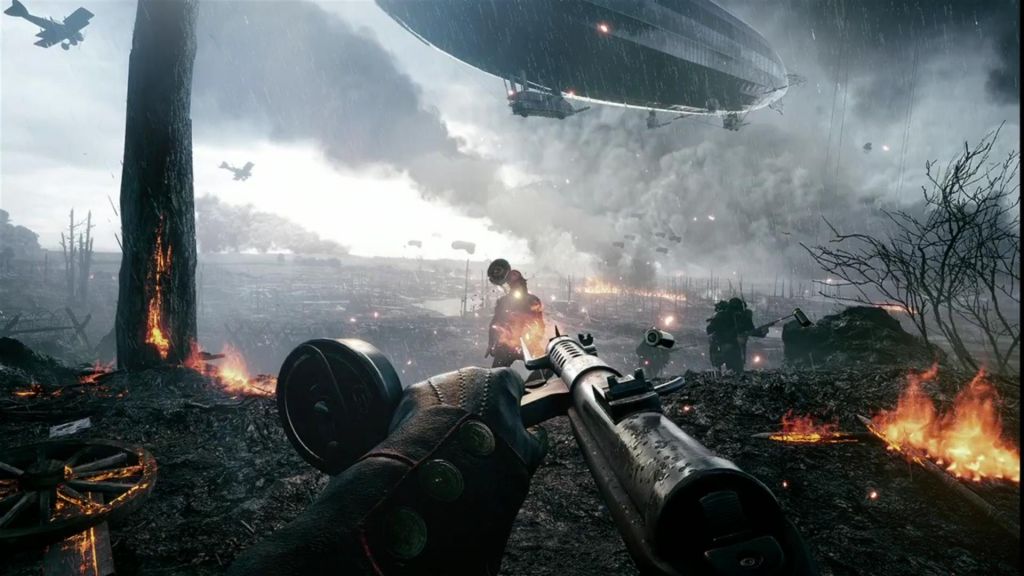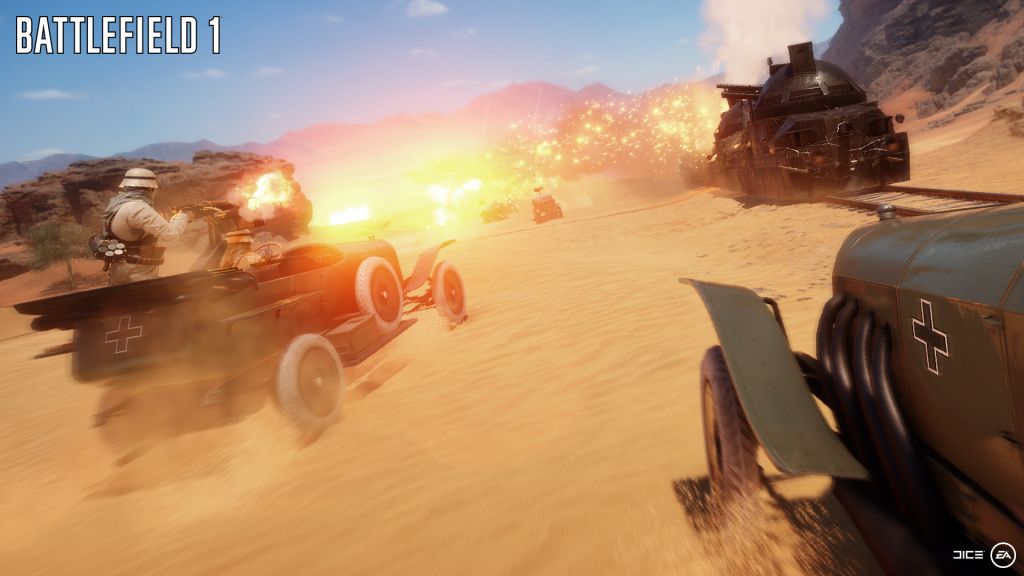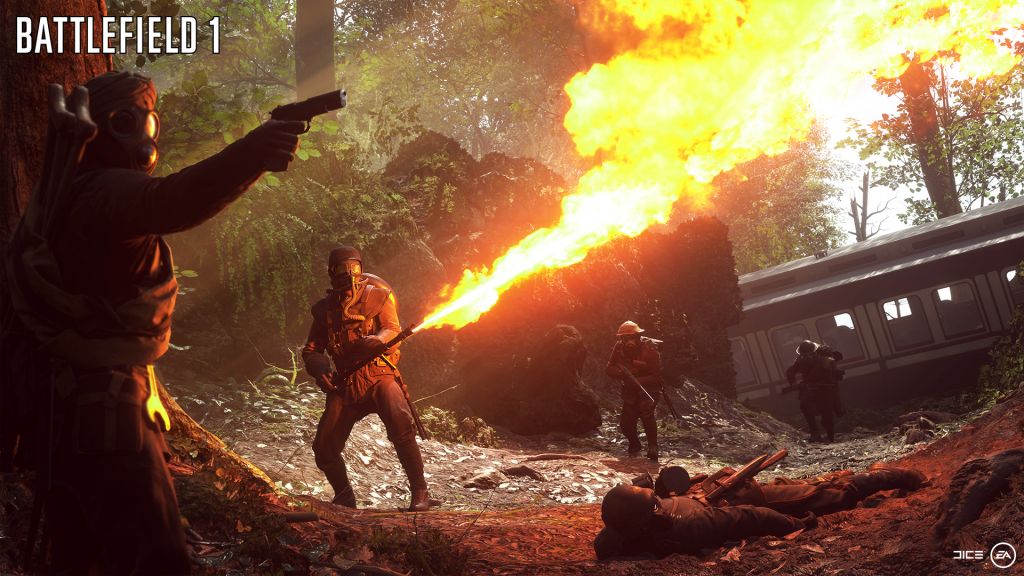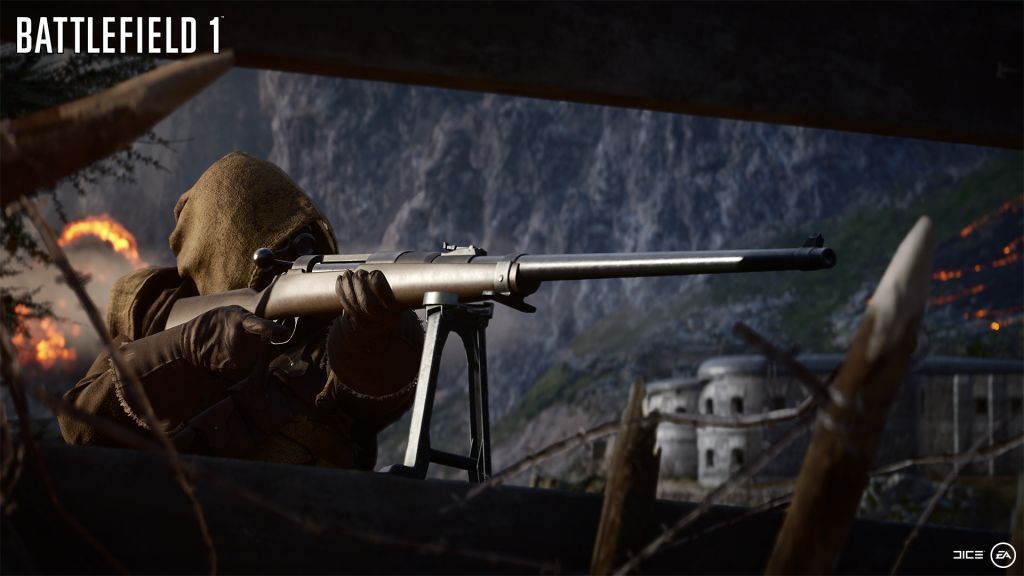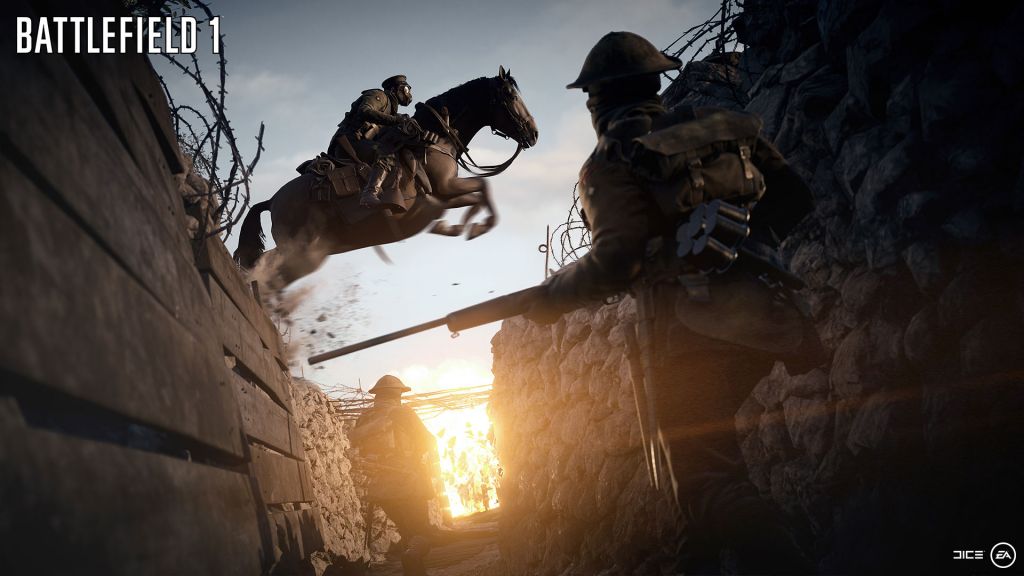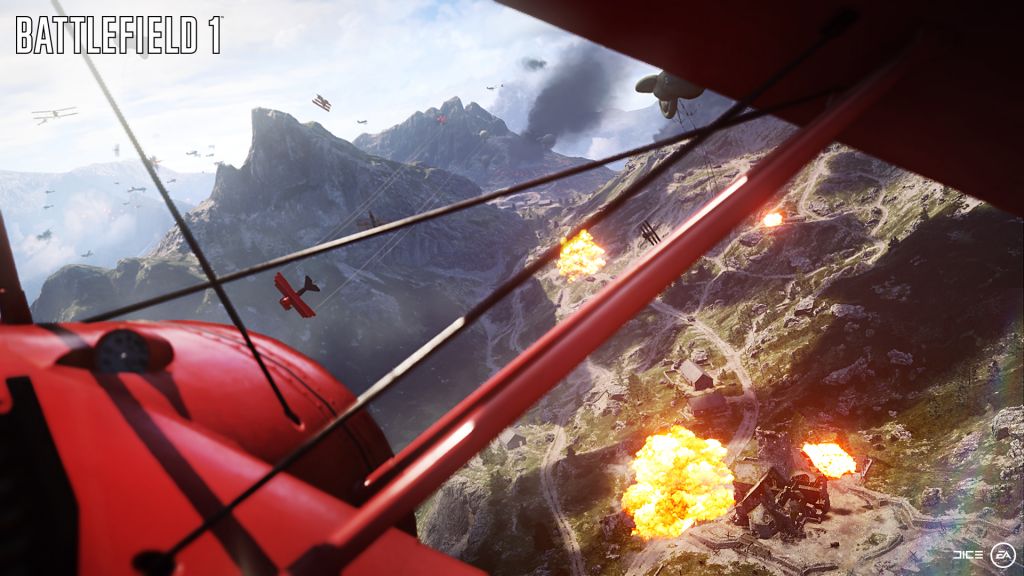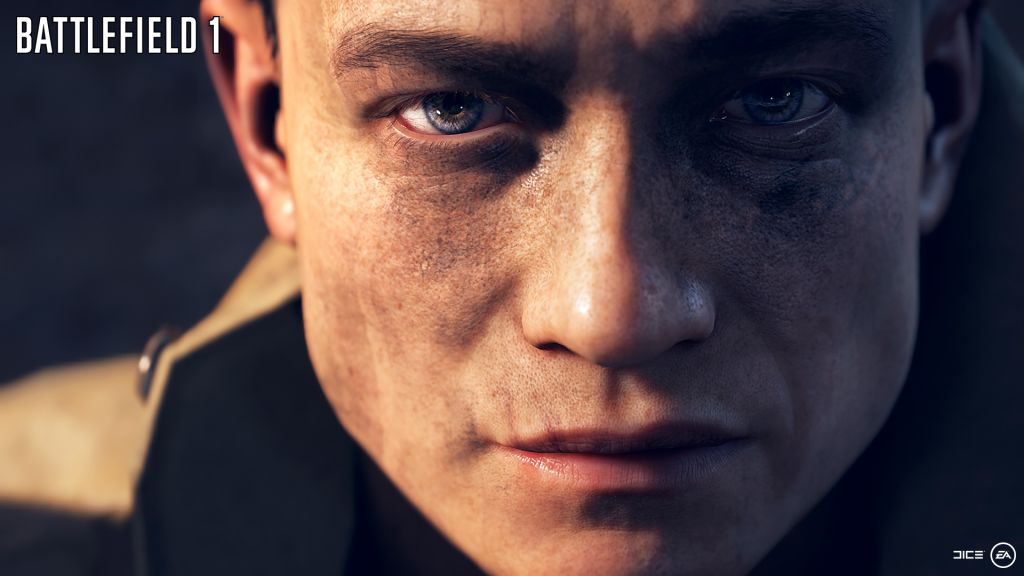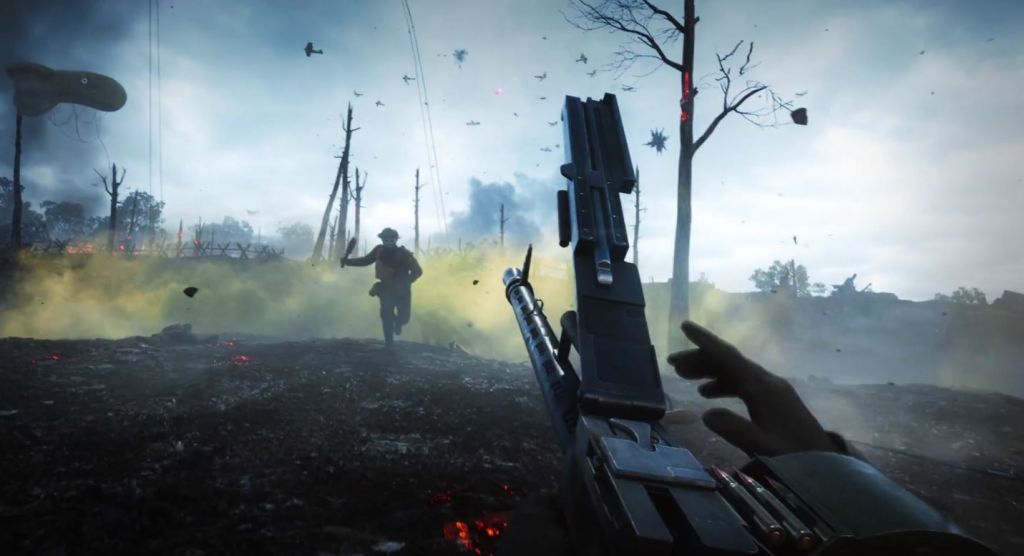Battlefield 1
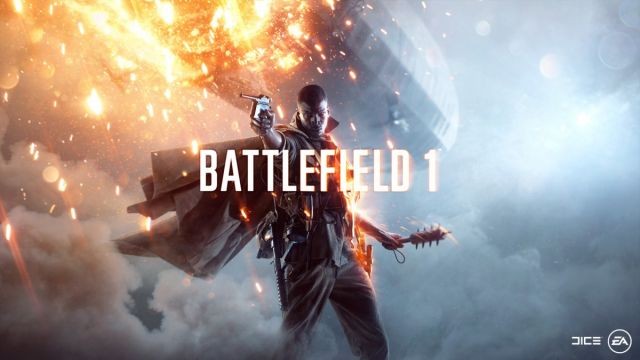
The Good: Frostbite engine looks amazing. Significant single-player campaign that is actually pretty interesting.
The Bad: Multiplayer can get very lopsided.
The Ugly: Mostly run of the mill multiplayer variants.
I’m having a lot of trouble writing this game review, far more than I should be having, because there really isn’t that much to say about Battlefield 1. BF1 is a very typical AAA FPS – nothing more, nothing less. It’s nicely polished, with good sound effects and great graphics, has a surprisingly engaging single player campaign, and entirely common multiplayer variants for the most part. BF1 isn’t exactly forgettable, but it adds little that’s new to the genre. I could probably, literally dig up my review of the very first Call of Duty, and 90% of it would apply to this game as well.
For whatever reason, BF1 is set in World War 1. WW1 has not been a common setting for FPS games. WW2 on the other hand has been done to death. I’m sure I’ve made the observation, and I’m equally sure I’m not the only one to have done so, that likely more virtual lives have been snuffed out in WW2 FPS games than died in the actual entirety of WW2. I think this is likely because of the simple passage of time. Pivotal battles of WW2 still strike a chord, even today – Pearl Harbor, D-Day, Dunkirk, Stalingrad. Though I’m not a particularly good student of history, I can name those places, describe the general pieces of those battles. My memory of WW1 is less concrete than my memory of what I had for dinner two days ago (some kind of meat). Even with Wikipedia’s help, I’m having a hard time putting together the elements of key battles. The Battle of Transylvania? Wasn’t that the one where the Wolfman and the Mummy teamed up against Dracula?
Anyway, from a graphics perspective, WW1 has biplanes and triplanes flying around, and blimps, and a lot of the weapons and vehicles are really old designs. Chemical weapons were sort of common in that war so get used to putting on and fighting in a gas mask. I’ll admit that it feels very WW1 in the same way that Star Wars Battlefront (another game made by EA DICE) feels very Star Wars, but from a gameplay perspective, I’m not sure any of this has much of an impact. Getting shot by a strafing Sopwith Camel isn’t all that different from getting shot by a strafing tie fighter, and a grenade is a grenade is a grenade, is still true for one designed in 1915. That said, even if you can’t really tell the difference in how it plays, the Frostbite engine (whichever version they’re up to) does a great job of creating that environment. You can blow up parts of buildings, raise huge clouds of dust. Mustard gas looks like the poisonous green cloud it is, with soldiers darting around in the deadly fog like wraths. Battles take place in forests and blasted cities and desert. It does look amazing, but to be fair, I probably had that same thought when Call of Duty came out in 2003, though the bar is a lot higher now.
If BF1 shines somewhere, I would have to say it is in the single player campaign. These, I think there are half a dozen, vignettes put you into the shoes of a particular soldier, for example that of a new tank driver. You go through a series of missions – drive the tank here, take out that target, then escort infantry to that other place. When the tank is damaged you have to get out and find parts to repair it. They serve somewhat as tutorials, teach you how to drive a tank or fly a plane, but they are fully-fleshed stories in their own right. I especially liked the one about the pilot which is a vast, swashbuckling tapestry that plays not unlike an Indiana Jones movie. Each of these stories lasts about 2 hours, so the whole single player campaign likely clocks in at about 10 hours, and I appreciate them spending the time to create it. One of the big weaknesses of SWB was the lack of a campaign, and I think EA DICE has taken that lesson learned to heart.
Multiplayer supports up to 64 players, though the maps are large, sprawling affairs and I never felt like I was part of that big a group. I’m fighting here with my six or eight guys against the other six or eight enemy guys who are nearby. Sure, there are 40 other people fighting somewhere else on the map, but they’re so far away that I can’t even hear their gunfire. Often, especially in the city maps, it was just me and a couple of other solders exchanging bullets in some hallway. The exception to this might be the variant “Rush,” (more on that in a moment) which tends to concentrate the action somewhat. Players can choose from a number of different classes – infantry, support, scout, etc – which come with different weapons and team roles. Many maps also have vehicles lying around (I even saw a motorcycle with a sidecar once, but I didn’t get to drive it) and you can ride a horse. I don’t know where to find a horse, so I haven’t gotten to try that either.
I have run through all the multiplayer variants, but have yet to find a standout. You get the usual deathmatch, conquest, and domination types. There is a new variant they’re calling “War Pigeons” (if that name doesn’t stir the blood, I don’t know what will), wherein you find and recover pigeons that appear in small cages on the map. You then have to stay alive long enough to write out a message to attach to the pigeon. This isn’t anything you’re actually writing, but you have to have the pigeon in your possession and not be running around a lot (which slows your writing speed considerably) until the message is complete, and then release the pigeon which drops an artillery barrage on the enemy. The object is to release three pigeons, though in the several games I played, all of them ended by the time running out, not by three pigeons. I’m also not convinced the artillery is particularly devastating or worth all the hassle of recovering and releasing the pigeons, except that’s supposed to be the goal of course. The other variant is called “Rush” in which one side defends and the other attacks two targets. If the defending team loses both of them, two new targets appear. This continues until the time runs out or the defending team has lost five sets of targets. This concentration of all the action down to two relatively nearby targets (as opposed to say trying to capture and hold five widely spaced flags) increases the feeling of the scope of all these players shooting it out, though with two targets to go after and respawning and whatnot, probably no more than 10 or 15 players on a side are shooting it out at any given time.
The multiplayer games can have a nasty tendency to become unbalanced – and I don’t say that just as a guy who is really bad at it. For one, the big contributors in a multiplayer match (the most kills, the most flags captures, whatever) are announced at the end of the game and are awarded stuff. Weapons, medals, some type of bonuses (I’m not exactly sure what, as I never win them) – all of those things add up to make strong players stronger and leave the bottom feeders (I’m looking in a mirror here) even worse off. The second issue, and this is a pretty big one, I shall describe by way of example: I was playing Rush on defense, and my team (probably because I was on it) lost the first two objectives very quickly. Then, even though we started to coordinate a little, we were slaughtered like sheep at the next two. Out of curiosity, I checked the team rosters, and found my team was down to 11 players out of a possible 32, while the other team was at full strength. The game had started balanced – had waited until the teams were full before starting – but people had left, swapped teams, whatever, until here we were, with a team with 3x the players we had. I continued playing, mostly to see what the game would try and do with that, and the answer is nothing. The game did nothing about the imbalance. In fact more people quit, and by the end we had only 9. The multiplayer games are pretty long – 30 minutes or more – and spending that much time getting your butt kicked is neither fun nor fair. I’m not sure I’m a big fan of penalizing players for quitting multiplayer, but it should have done something – maybe just switched players between teams at respawn (though when it really went to hell, I’m not sure we were killing all that many opposing players anyway, and the ones we were killing were probably their worst players, and so would not have helped the balance that much).
Despite its WW1 setting, you could close your eyes and plug your ears, and you could be playing Star Wars Battlefront for all you can tell – OK, so that metaphor doesn’t quite work (if for no other reason than SWB has Walker Assault, which is an amazing multiplayer game), but I hope you get what I’m saying. I’ve had friends tell me that Battlefield 1 is better than Battlefield 4, but despite owning a copy (I think it came with my video card), I’ve never played BF4 and so can’t comment. I’m not saying BF1 is bad. Indeed, the single player campaign is very good. But overall, considering the whole package, I’m kind of underwhelmed.
Reviewed By: Phil Soletsky
Publisher: Electronic Arts
Rating: 80%
——————————————————————————–
This review is based on a digital copy of Battlefield 1 for the PC provided by Electronic Arts.
 Game Over Online
Game Over Online